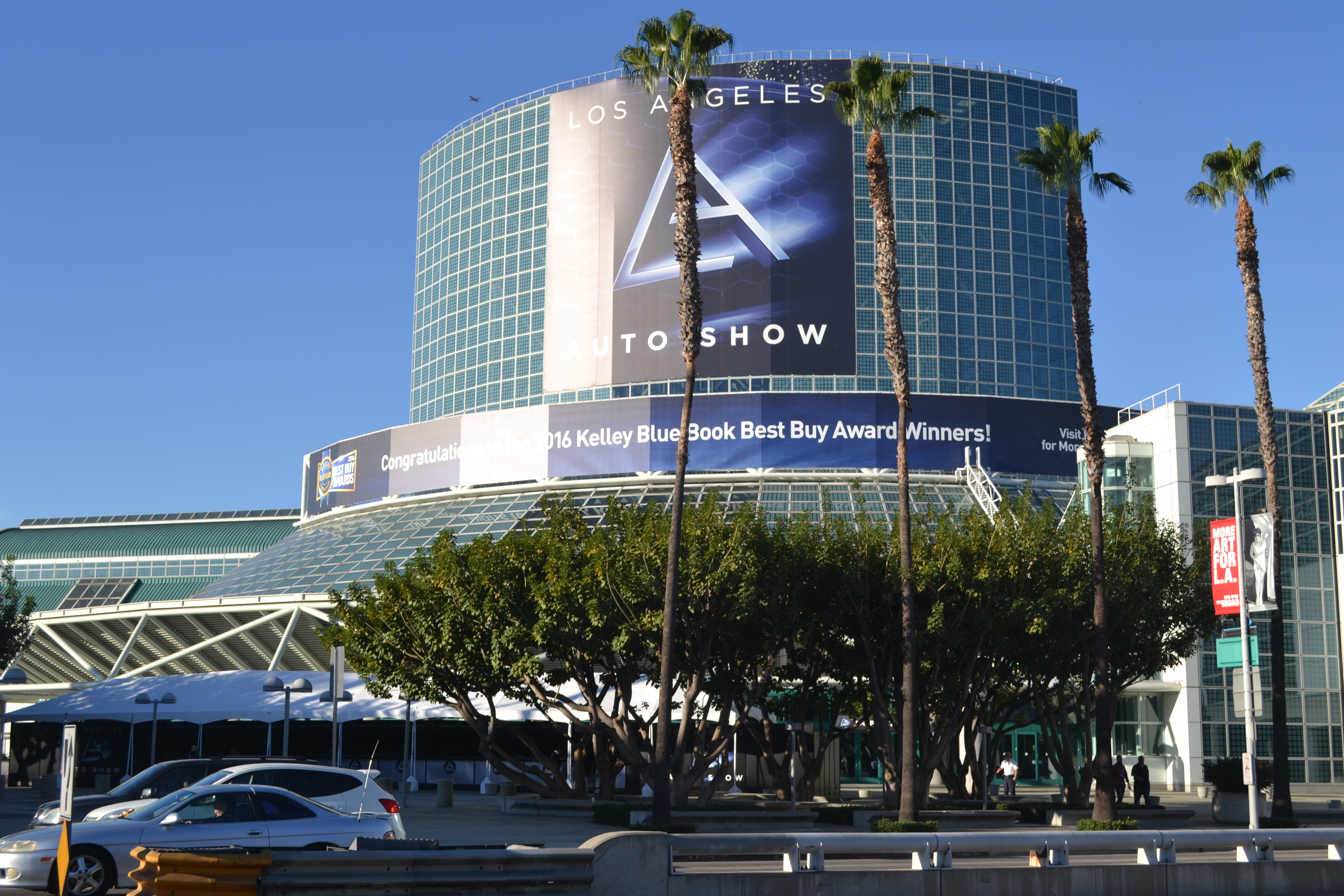
by Lidia Paulinska | Dec 16, 2015
The Connected Car Expo took place in November 17-19 at Marriott Hotel in the downtown Los Angeles. The Press and Trade event that unites automotive and technology professionals in the connected car industry this year again gathered the major top players and media.
In his openings remarks the mayor of Los Angeles Eric Garcetti stated that people are waiting for time that technology liberate them from daily traffic daily and increase the safety they seek on the streets. And, it is the right moment when the technology is embracing the future instead of chasing it away.
Michelle Avary, VP Automotive Product & Strategy at Aeris and CCE Advisory Board member presented Top Ten Automotive Startups. Michelle is also a Founder of Women in Automotive Technology startup, Silicon Valley based networking group. She shared the outline of the selection criteria that CCE Advisory Board use to choose the notable startups in connected cars field. That are four broad categories: safety, mobility, connectivity and autonomous. The Winners of 2015 Top Ten Startups of the New Automotive Industry are: Capio, High Mobility, TriLumina, Getaround, Elio Motors, Sober Steering, Driversiti, Quanergy, Nebula Systems and HopSkipDrive.
Then CCE Emcee Brian Colley, Editor-at-large and host of CNET On Cars, took the stage to address the status of connected cars industry. What is the future of our streets and our cities? It can be called the connected cars era.
For the first time in 2015 an autonomous car drove across U.S. coast-to-coast road trip. On the panel The Long and Winding Road to Autonomous three experts: Prof. Dr. Thomas Form, Head of Electronics and Vehicle Research at Volkswagen, Brian Droessler, VP of Software & Connected Solution at Continental North America and Ph.D. Gary O’Brian, Global Director of Advanced Engineering at Delphi Electronics and safety discussed what the industry has done and what still need to be done in the road to highly automated driving.
What is the future of our streets and our cities?
As we have seen the last few years, it is conversion to digital and electronics devices that have been flowing into the cars. In the next 10 years we will be seeing a change in the information, entertainment, navigation and logistics in our vehicles. There are changes on how we relate to the cars, how we fit with them and what we expect from them. The connected cars are taking their seat at the table in electronic digital connected world and are a part of the Internet of Things (IoT).
When we think about technology, the mental picture that comes to our mind is: smartphones, smartwatches, and tablets. It should be so, because we have many types of devices in our lives. The reality is, the electronics and electronics devices are not technology. Technology is a word that we can find in dictionary, a word that pre-dates the era of electronics and pre-dates of the era of electricity. Technology by a definition is: “A branch of knowledge that deals with the creation and use of technical means and their interrelation with life, society, and the environment”. Technology in simply words means how we get things done. In the vehicles it means how we get where we want to go; how we do it efficiently, comfortably, and safely with the vehicle serving us, as oppose to us have to alter our life around the need of transportation.
There are 4 great challenges and requirements that we need to overcome and meet for connected cars:
Transparent – limit distraction via using the clean interface on the dashboard. In the past we had the remote controls that were extremely complicated and the customers were lost and did not use many of the functions. Simply too much was too much. That cannot be the case for the car, the connectivity has to allow for focus on the driving, not the interface.
Intuitive – Easy to understand how to use and why, because the connected cars speak to the entire population: people in different professions, tech geeks, TV enthusiasts, etc. Why means they need to understand– what is a benefit for a customer to have connected car, autonomous car, why they need that future.
Intimate – the internet is the future of the car. When we look at the cars now, the relationship between us and car is dumb in many aspects. The car doesn’t worry about you, the car doesn’t care about you, it doesn’t know more about you from the day bought and brought it home to the day you sell it. It is itself. The car is just kind of a cold machine for the most part. In the future, the personalization will be flowing into the car through the connectivity, and make it better today than was yesterday. More about me the driver, better tuned to what I need from it. This experience as well as services that we bring in, as the driver, I need them to follow me into the car, not just have them live on my phone, my desktop, my tablet, my TV or my home.
Constant – Reflecting the kinds of services that are second nature outside the car. At present, the car is an island. You have a routine of behaviors in your life, then, when you get into the car, the behaviors change, it is different. The view is different for the navigation dash, it use different media services. In the cars we feel a little cut off from our regular life, sort of an awkward little connection to those things we do outside of the car. This will be changed when we have constant heartbeat of all our services, relationships, personalization and digital world following us into the cars consistently. This will make the transportation aspect of our life consistent with the rest so it feels like the same space we live in, just one that is moving.
This is the goal of the connected car and what it brings, a new portion of our life that is now a continuation of the way we live, not a break from the real life or being held hostage and in limbo in traffic. Work, social interaction, entertainment, enjoyment of the trip, recognition of who you are and what you do will all be part as the new experience for getting from point A to point B in a car in the next few years.
Text by Lidia Paulinska and Tomasz Kolodziejak
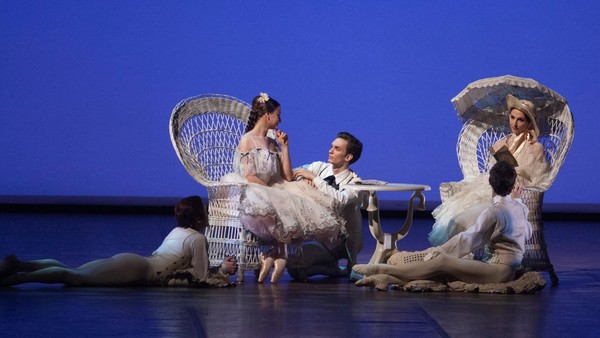
by Lidia Paulinska | Dec 10, 2015
The very words “Bolshoi Ballet” strike awe in the hearts of every devoted balletomane world-wide, and justifiably so. And on December 6, 2015, the world was indeed rewarded with an outstanding production of John Neumeier’s classic The Lady of the Camellias direct from Moscow compliments of Fathom Events, featuring the exquisite Svetlana Zakharova in the lead role of Marguerite, the consumptive courtesan who falls tragically in love with the young Armand, performed with style and strength by Edvin Revazov. This is a true ensemble production in which every element is essential to the outstanding success of the whole.
The story is a familiar one of star-crossed lovers based on Alexandre Dumas’ 19th century novel and operatically immortalized in La Traviata. Neumeier’s lyrical interpretation possesses a meditative, almost hypnotic quality as his dancers flow magnificently through Frédéric Chopin’s exquisitely romantic music, performed on pianos both on stage and in the orchestra pit and backed by the Bolshoi Theatre Orchestra under the able direction of Pavel Sorokin.
This is a relatively brief, beautifully-paced ballet, running as it does in three, forty-five minute acts with two twenty-five minute intermissions. Because of this compactness, the audience is left in the end with a sense of peaceful contentment due in part to the work’s magically contemplative pace which mitigates to some degree the tragic nature of the storyline. The sheer beauty of the movement, the music, and the entire miss en scene imparts to us a serenity that defies analysis and lies beyond critical judgement; we select from the experience what we will, meditating on the aesthetics and making them our own. And that is the sign of a true classic.
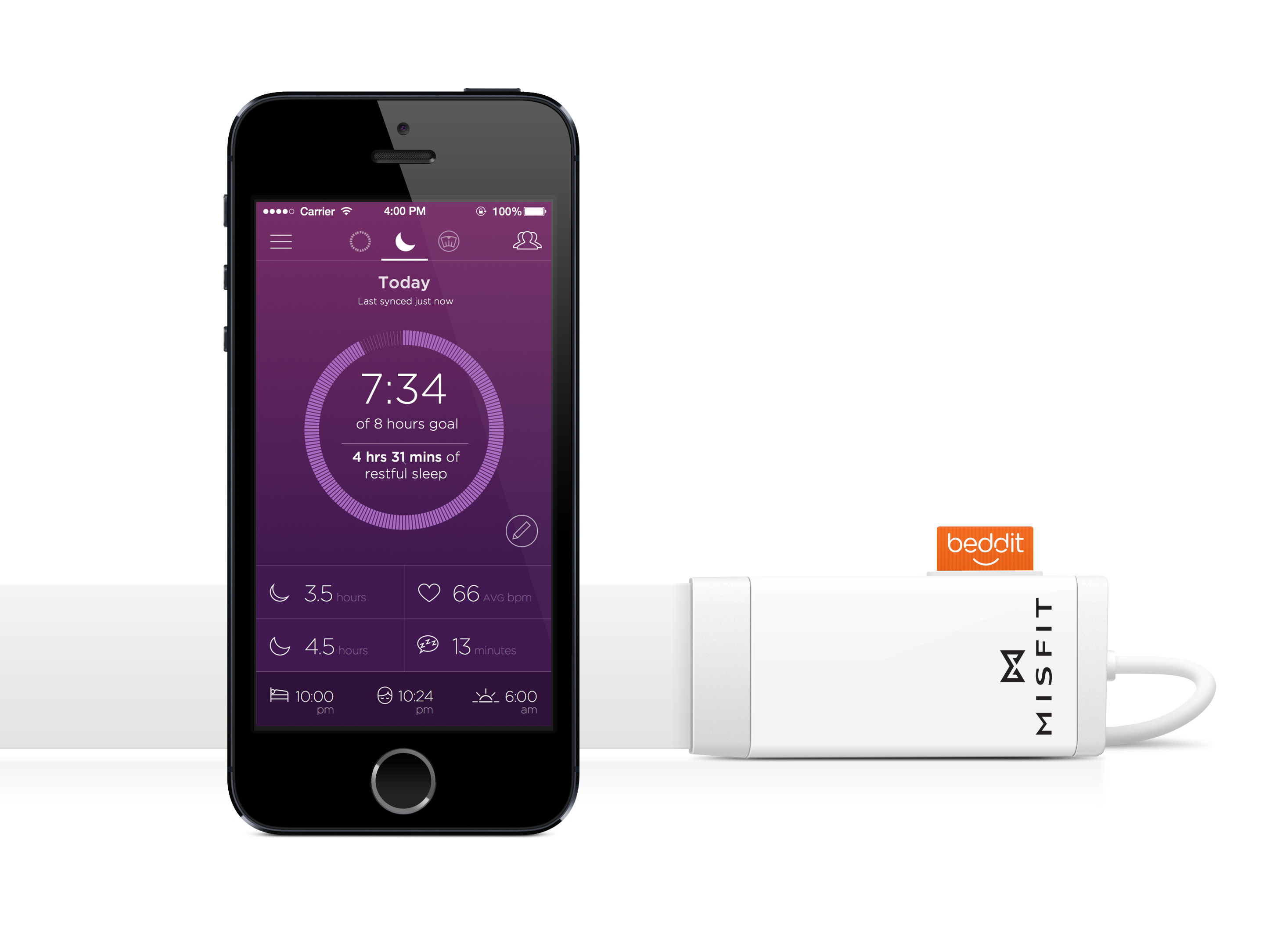
by Lidia Paulinska | Dec 8, 2015
The latest version of Beddit products, the sleep trackers that monitor our sleep, has a Bluetooth connection so it can be connected to you smart phone overnight. The brand is primary focus on Apple devices but it also has an app on the Google play. Recently the software was updated to add an iWatch connection. The iWatch application has all the same functions as the phone app, plus some additional features. The screen is adjusted to the smaller view, so it requires 3-4 swipes to see the information normally on a smart phone display.
Both iPhone and iWatch have an easy process to install the apps from the iTunes site. The Google Play app for Android is also easy to find and install. Once installed, the app has a single start button to operate, so it is very easy to use as well. The information are collected overnight and can be simple to understand and analyze.
As everyone with the sleeping problems knows it is difficult to fall asleep again after waking up during the night. The Beddit sleep monitor helps you figure out your sleep cycles and the product does not need any uncomfortable straps on the person being monitored that can affect their sleeping. The unit has a band that goes under the sheets and attaches with adhesive to the edge of the mattress while the sensor goes under the sleeping person about chest height.
The Beddit sleep monitor is currently available at on-line and retail outlets. For the holidays, they have a bundle with an anti-snore pillow that is highly recommended for the people with mild sleep apnea. The sleep monitor with an anti-snore pillow are available at Brookstone.
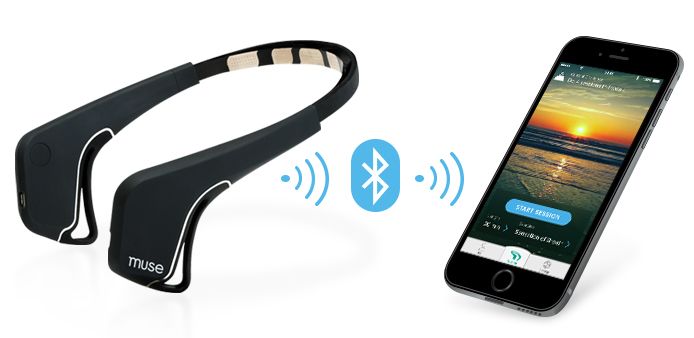
by Lidia Paulinska | Dec 8, 2015
One of the challenges in today’s busy world is finding the time and taking the time to relax your body and mind. One of the methods is through meditation, but what happens when you meditate and you don’t know if you doing that right? You have all those thoughts running through your brain that often are hard to silence and let you relax. Solution? Muse, the brain sensing headband was created to help us meditate easy and experience all the benefits of meditation and relaxation. The headband equipped with sensors can sensed the EEG brain activity and connects to a smart phone app via Bluetooth. The app not only has the guided relaxation sounds, but also has a tracking screen so you can see your progress.
Getting in to a relaxed state is not as easy as it sounds, based on a study by the psychologists at Harvard University. Most people spend 47% of their day thinking about something other than they are currently doing. That is also the case for people who mediate or try to relax. The Muse headband helps train you in 3 minute sessions, to control your stress and tension and move to a productive meditation.
With device like Muse you visualize with your audio representation what is happening in your mind with the weather metaphor. So if you have Muse headband on you and you occupied with many thoughts it would sound stormy and windy. Muse will help you calm and find peace by breathing exercise and focus exercise. The app has graphs of the progress and stress in the current session and allows you to track prior sessions. This tracking allow you to train yourself to have a productive relaxation and meditation session which will bring increased focus on activities and tasks following the session.
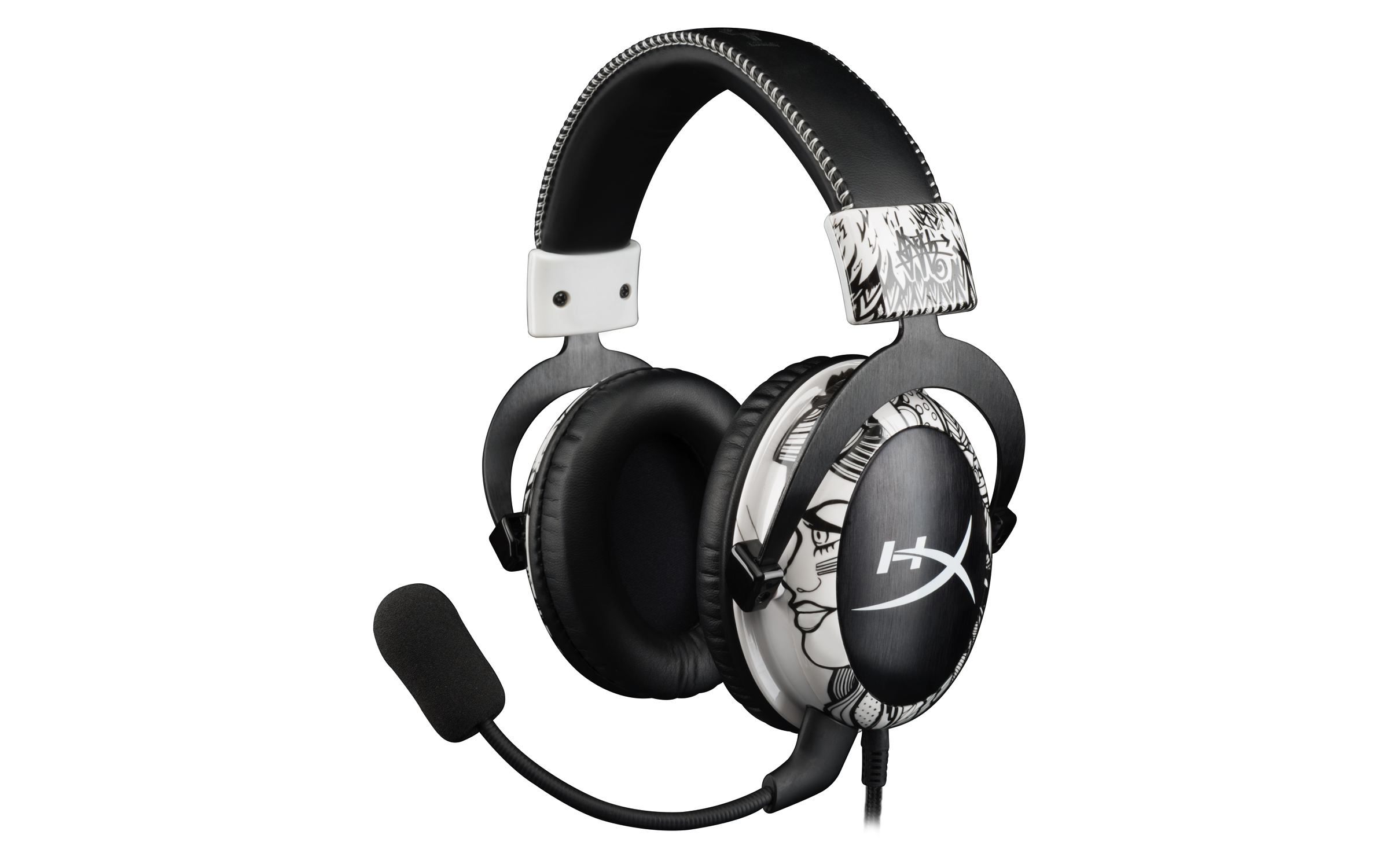
by Lidia Paulinska | Dec 6, 2015
Kingston just expanded its HyperX headset line with the new Cloud Mav Edition, Freestyle Series. The limited edition over the head and over ear headphones are designed for the serious gamers. The headphones are used in serious eSports competition including Intel Extreme Masters, Brazil Game Show, China Joy, DreamHack, gamescom and PAX, where is highly appreciated by them. This apprecaiation is not just because of the performance but also their jazzy look, which is a loving baby of the cooperation between Kingston Company and the artists.
The headphones feature a large memory foam ear cushions surrounding the high-fidelity 53mm drivers, a closed cup design and detachable microphone. The two set of ear cushions (leatherette and velour) provide excellent sound isolation, so background noises in the game and sound effects can be clearly heard. One of the challenges with gaming headphones versus general listening headphones is the how the sound is separated to insure that voices come out clearly over the background. HyperX headset uses a separate detachable microphone to insure high quality communications in multiplayer games. The microphone uses a 6.5 mm diameter electret condenser capsule that is configured in a Cardioid pattern to minimize environmental noise pickup.
The headphones and microphone system is a wired design that is compatible with PCs, notebooks, tablets, mobile phones, airplane adapters and PS4 consoles though a standard 3.5mm mini stereo jack connector. The wired design works well for multiple people playing in one area as well as eliminating noise and false sounds that may come from other electronic devices. Most wireless headset systems pickup sounds from cell phones, tablets, laptops and other devices when connected to consoles and gaming computers. The high quality connection cable and the memory foam ear cushions give a very clean and isolated experience allows for deep immersion in the gaming environment.
The headphones are available from most retail channels for holiday season and comes with two-year warranty.
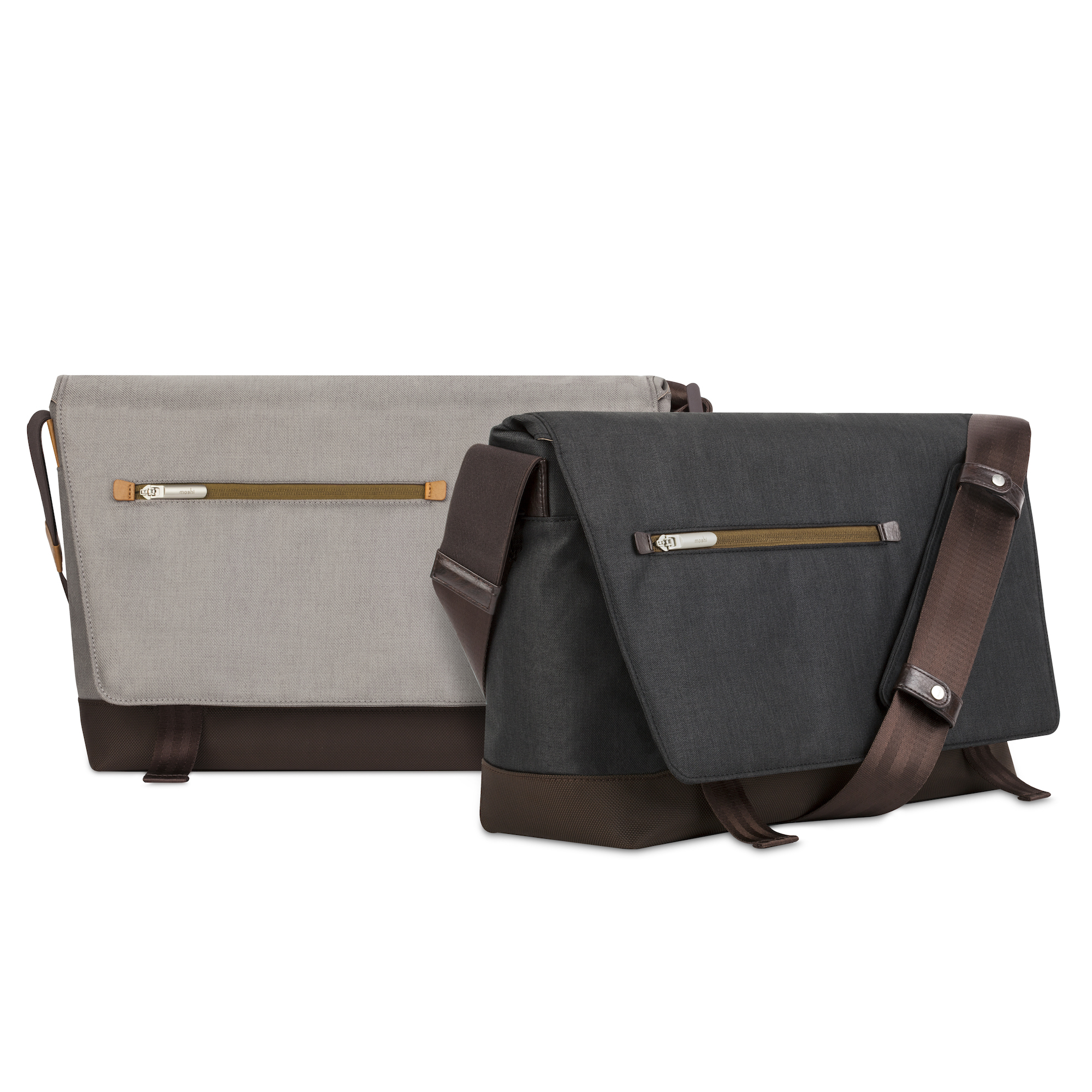
by Lidia Paulinska | Dec 6, 2015
This holiday season Moshi brings to its variety of electronics accessories new stylish and tech-savvy, messenger style Aerio bag. Designed for 15” laptop or tablet has also many, some expandable, packets/compartments for camera, headphones, wallet, phone etc. The bag features a proprietary ViscoStrap solution, the strap that reduces the effective weight of the bag on your shoulder when it is carried. The bag comes in two colors – Black and Grey. It is made of sturdy, premium, water-resistant fabric with stylish leatherette trim. It is All-in-One bag solution for professional, tech community that cares for design and usefulness.
The bag is very functional and addresses the need for the modern traveler – whether it is plane, train, bus or car – to have their laptop/tablet with them, along with the camera, cables, chargers, and purse supplies. The size is set nicely for not being too big, but large enough to hold what is needed. The bag is sized to fit under the seat for airlines, so you can have your items near you for flights.
by Tomasz Kolodziejak
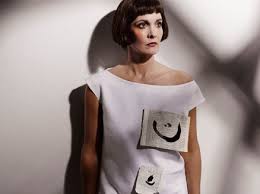
by Lidia Paulinska | Dec 6, 2015
On December 2, 2015, in a live encore performance from the Metropolitan Opera House in New York City, Fathom Events presented Alban Berg’s masterful opera Lulu, featuring Marlis Petersen in the title role, Susan Graham as Countess Geschwitz and Johan Reuter as Dr. Schon. This was a very special performance, for it was to be Ms. Petersen’s final appearance in the role of Lulu after a professional career of delighting audiences here and abroad.
Alban Berg (1885-1935) was an Austrian composer, heavily influenced by Arnold Schoenberg and the culture of fin de siécle Vienna. He composed two seminal operas which were the most innovative and influential works of the 20th century: Woyzek (1925) and Lulu (1937). He is known for combining 19th century Romantic elements with Expressionistic idioms of the 20th century.
In this visually stunning production, the romantic lyricism of the music works in counterpoint to its atonality, and is complimented and contrasted with the stark, black and white expressionistic rear-screen projections, which, through their often violently changing patterns, create a kind of choral commentary on the action. Sudden giant swarths of black ink wash across the screen from one end of the huge Met stage to the other, and just as suddenly may dissolve into indiscriminate lines and circles with faces emerging from the seeming visual chaos. Characters on stage may wear cylindrical cardboard coverings over their entire heads featuring painted images and Lulu herself, as the personification of lustful, carnal desire, may append to herself cut-outs of her sex, becoming a cartoon-like nude.
Projection Designer Catherine Meyburgh, Set Designer Sabine Theunissen, and Costume Designer Greta Goiris all fulfilled the extraordinary task of creating visual magic and Maestro Lothar Koenigs along with the magnificent cast of Lulu were all instrumental in creating a memorable experience that will live on in our imaginations long after the final curtain.

by Lidia Paulinska | Dec 4, 2015
As part of their excellent “event cinema” series of filmed theatrical presentations, Fathom Events (fathomevents.com) screened William Shakespeare’s The Winter’s Tale for a one-night-only showing November 30th at hundreds of movie theatres throughout the world. This masterful production was performed by the Kenneth Branagh Theatre Company at the Garrick Theatre in London with Mr Branagh doing double duty as director and lead character Leontes and brilliantly complimented by a stellar performance by the incomparable Judi Dench as the redoubtable Paulina.
William Shakespeare penned thirty-seven masterful plays and 154 sonnets. Over the ensuing centuries there have been many attempts to categorize his plays, to fit them into a specific genre niche like “tragedy,” “history” and “comedy,” with many easily conforming to one or another of these categories, such as Hamlet, Macbeth, et al. who have earned their rank as true tragedies as evidenced by the body-strewn stages in their final scenes. Furthermore, those works that may be easily labeled “histories” include of course Henry IV, V, VI, Richard II & III, et al. since their primary focus is in fact on English history, albeit fictionalized like our contemporary historical novels.
Perhaps more problematic however, are those works that critics have attempted to label “comedies.” These so-called “comedies” share little in common with our 21st century American notion of what is in fact a true comedy. What often gives these classic works new vitality and relevance for a contemporary audience are well-positioned and thematically relevant directorial interpolations such as original music, zany by-play among the characters, imaginative staging and set design, etc.
Called “a timeless tragicomedy of obsession and redemption,” The Winter’s Tale is all of that and more. Wisely avoiding getting into the “genre controversy,” the scholar/critic Harold Bloom has observed, it is a vast pastoral lyric, “a mythic celebration of resurrection and renewal,” and of course a psychological novel of the first order, dealing as it does with the destructive force of the jealous rage experienced by Leontes toward his boyhood friend Polixenes whom he mistakenly believes to be responsible for the pregnancy of his beautiful and virtuous wife Hermione. It is Othello revisited, yet with refinement, for Iago has been internalized into the psyche of Leontes whose diseased intellectual activity renders him indifferent to moral good or evil.
If Act One deals with the destructive force of sexual jealousy personified by Leontes which causes the spiritual and physical death of his innocent wife Hermione, Act Two takes place sixteen years hence and, in contrast to the tragic events of the first act, opens on a high-flying festive note, featuring rollicking folk song and dance, foreshadowing Leontes’ mythical and redemptive reunion with a miraculous resurrected Hermione.
The final scene offers us a redemptively charged tableau vivant of Leontes, Hermione, and their sixteen year-old daughter reunited and thus a Leontes redeemed.
What distinguishes Shakespeare’s comedies from his tragedies is principally in the final scenes: In the tragedies, most of the principal characters wind up dead, whereas in the comedies, reunification and redemption prevail, marriages abound, and presumably everyone lives happily ever after, or as Shakespeare indicates elsewhere, “All’s well that ends well.”
And so too with Mr Branagh’s rich and compelling production: all was very well done indeed.
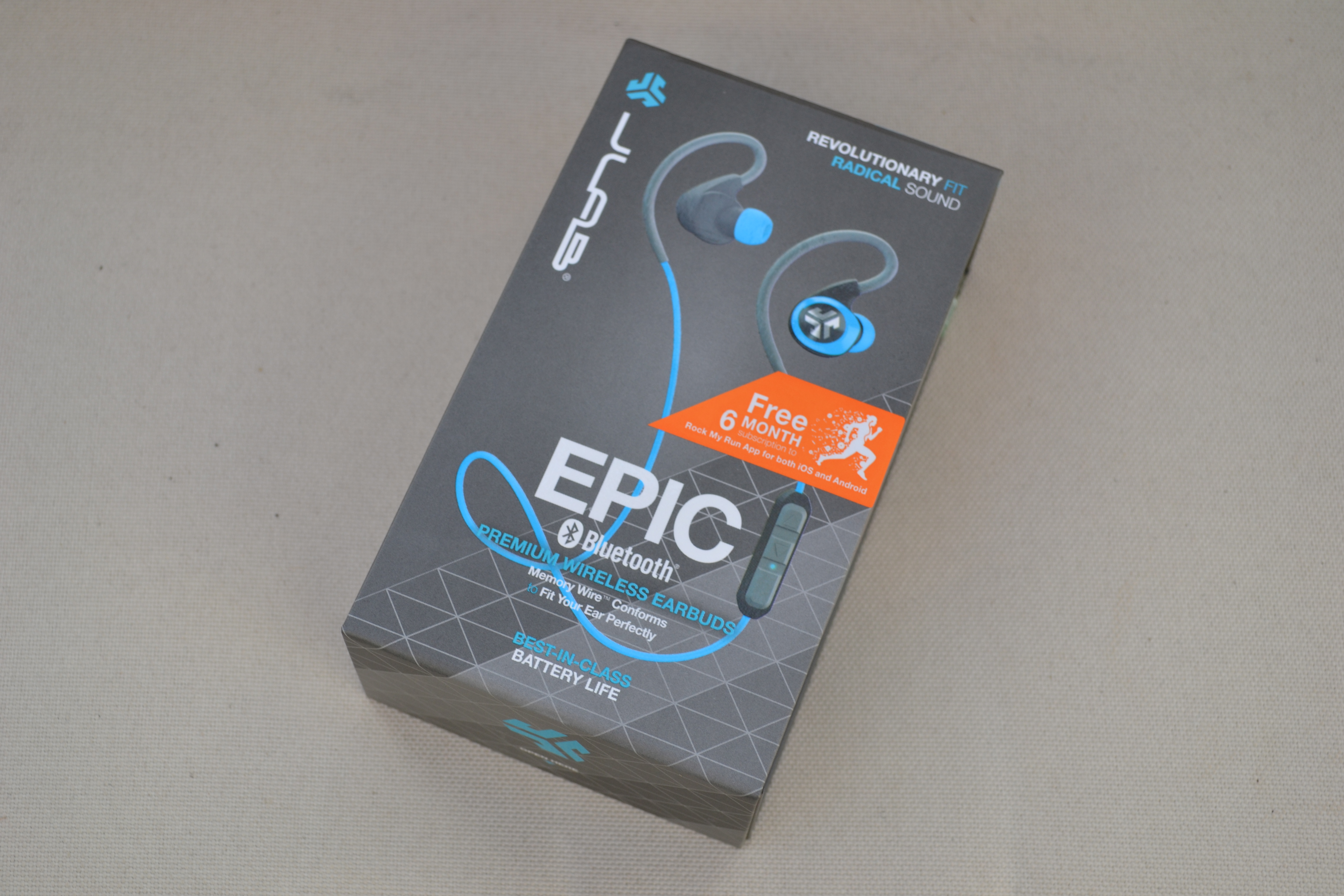
by Lidia Paulinska | Dec 1, 2015
Audio manufacturer JLab was showing their new EPIC wireless Bluetooth earbuds. Designed for the active user, the earbuds are waterproof for all weather and heavy exercise use. The design has a single wire connecting the two earbuds with an in-line microphone and control for both audio playback and phone call use. The EPIC earbuds are available in several colors to help match the fashion sense of the user.
Following in the path of the over the head headphones, the Epic earbuds are focusing on the quality of the sound. To maintain an even listening experience the earbuds have a clip to hold them in place. The new design is claiming a 10 hour battery life, and the earbuds worked close to that. The 10 hours is based on certain play and pause times, the reality is with waiting, phone calls, and playing music, a single charge will make it a full 8 hour day.
The headphones identified that they use a pair of neodymium drivers, the EPIC earbuds did not identify the driver type, but on a scaled down basis they are similarly clear. The earbuds were pretty clear for talking on the phone, however they did pick up a bit of wind and background noise due to the location of the microphone. Listening to music was fine, and would work well during exercise and on transportation and still make lyrics understandable.
The Epic earbuds are available on-line from the company website and major retailers.
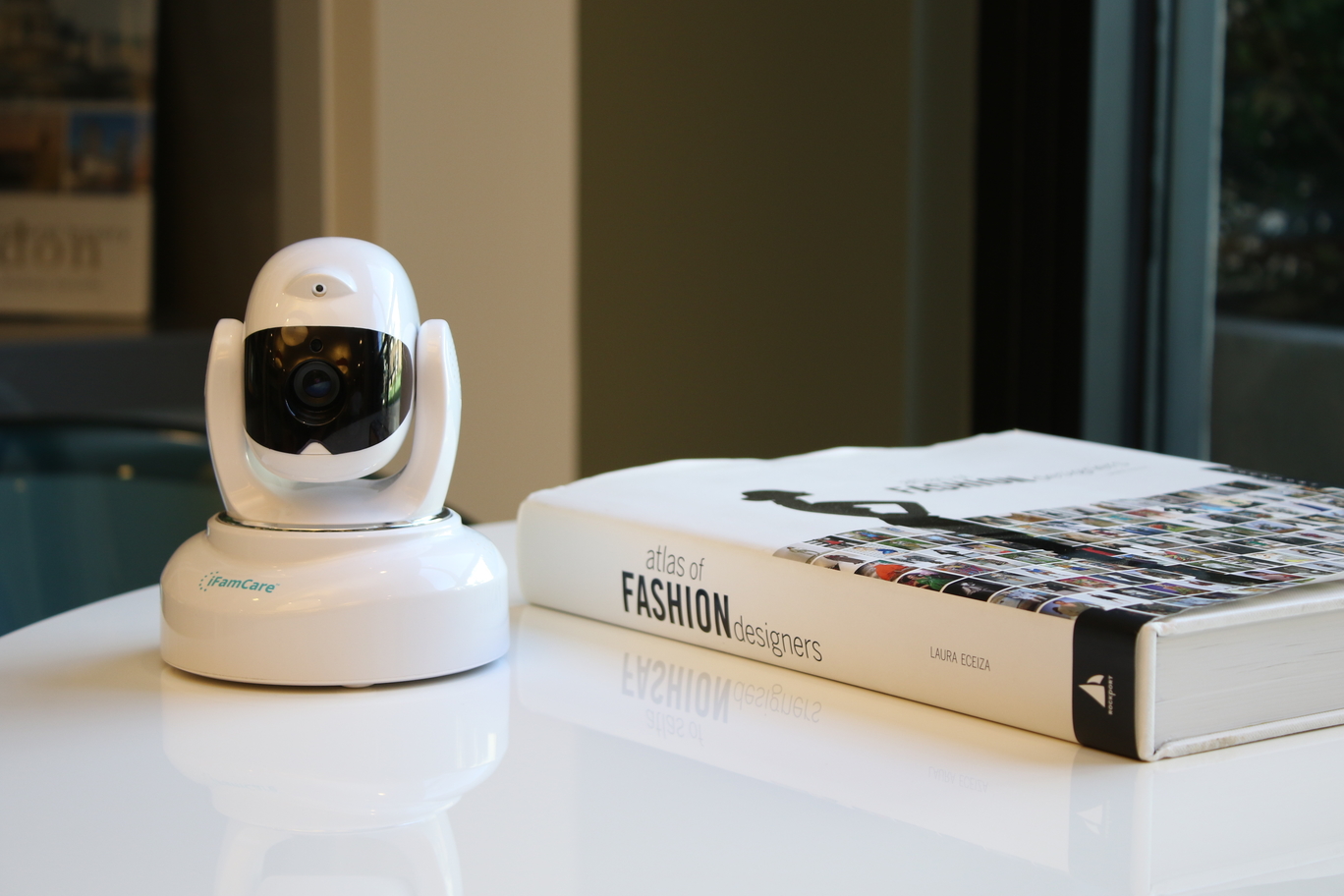
by Lidia Paulinska | Dec 1, 2015
iBaby Labs, is a company that has operated for the last four years in the baby monitoring space, is well known for its unique design, easy setup and user-friendly interface. As well as broadly awarded including Mom’s Choice Award, NAPPA Gold Award, The National Parenting Center Seal of Approval, Creative Child’s Product of the Year 2015.
Now the company is plunging into Connected Home under new brand iFamCare. No wonder when the new product, camera monitoring system, named Helmet, was launched on Indiegogo in July 2015, it surpassed its original goal within few days.
Helmet has elegant design and comes in four colors – white, black, silver and gold. The monitor boasts 1080p HD video, the ability to hear and speak, supports 360 degree horizontal and 110 vertical movement, sound and air quality sensors, smog detector and sound and motion alert. A built-in laser beam allows to interact with family and pets being away from them. They people and pets in the room can hear and speak to the helmet. The helmet also has a connection to social media platform.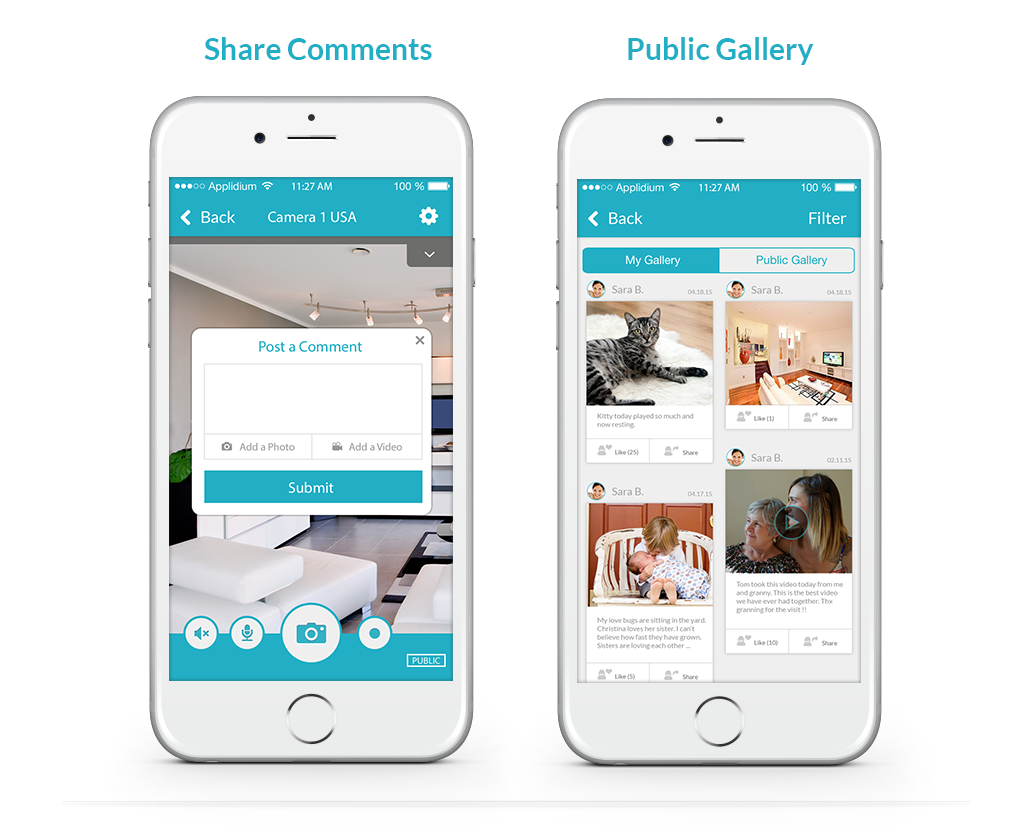
The unit is designed to be controlled from a smartphone on iOS or Android systems. The app is easy to find at both iTunes and the Google Play Store. The main functions of the web cam works well. The images are clear and the sound is good. The streaming to the smart phone works when the phone is connected to WiFi, but does not pass images when there is just 3G or 4G coverage on a standard cellular network. The night time mode is not a detailed one but good enough to evaluate what is going on.
The product is available at Amazon, and some other retailers for competitive price 149 dol.
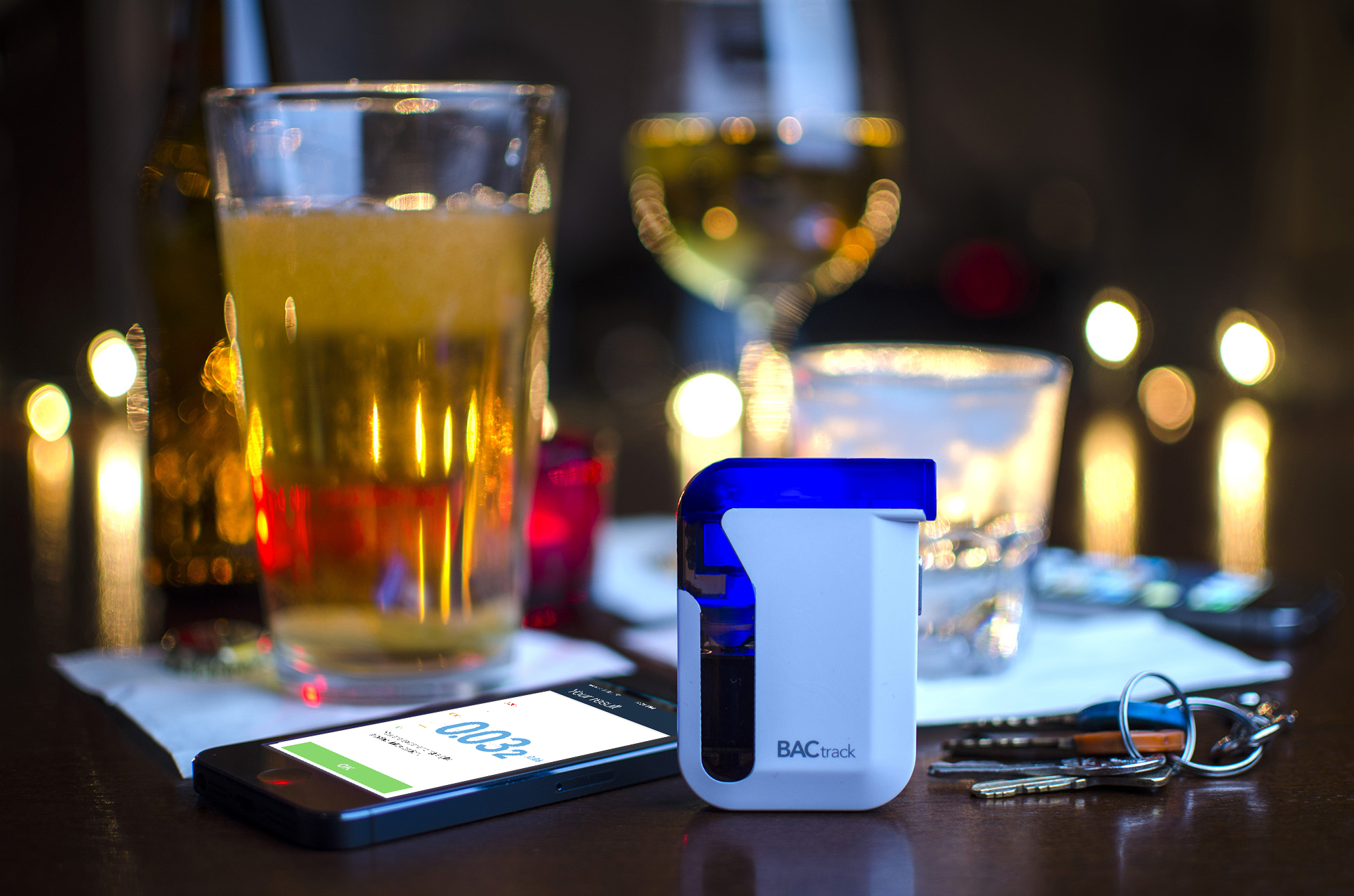
by Lidia Paulinska | Dec 1, 2015
If you ask what BAC means? The answer is Blood Alcohol Content which is now easy to track thanks to BACtrack breathalyzers, that many of you already known.
In 2015 holiday season BACtrack offers two new versions of their breathalyzers: BACtrack Mobile and BACtrack Vio Smartphone (key chain version). Both are supporting our lives being closely connected to smartphones and smartwatches via Bluetooth. There is no more guessing if you and your guests can safely drive because the BACtracks products provide police level alcohol measurement and the BACtrack Vio provides the trends on consumptions as well. The devices are design for a single person to user or multiple users when they use the additional mouthpieces. 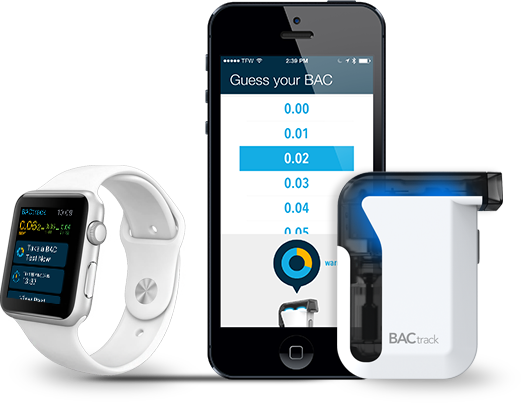
The BACtrack products support iOS and Android systems on our smartphones. Once connected to the free BACtrack app, a user is able to save and track the results over time, as well as add photos and notes to those results, in order to learn valuable information about the drinking habits. The app was easy to find on iTunes or Google Play Stores and easy to install too.
The results of the alcohol content can be easily send to user’s wrist. The new Apple Watch Integration allows for initiating and completing BAC tests via on the Watch. The use of the test results on the watch also make it more convenient to access the estimated alcohol level anytime using the Active ZeroLine feature that gives countdown. This feature is exclusively for the watch app, and not available on the smartphone app.
New BACtrack products are available in the main retailer stores as Costco, Best Buy or Walgreens.
by Tomasz Kolodziejak












